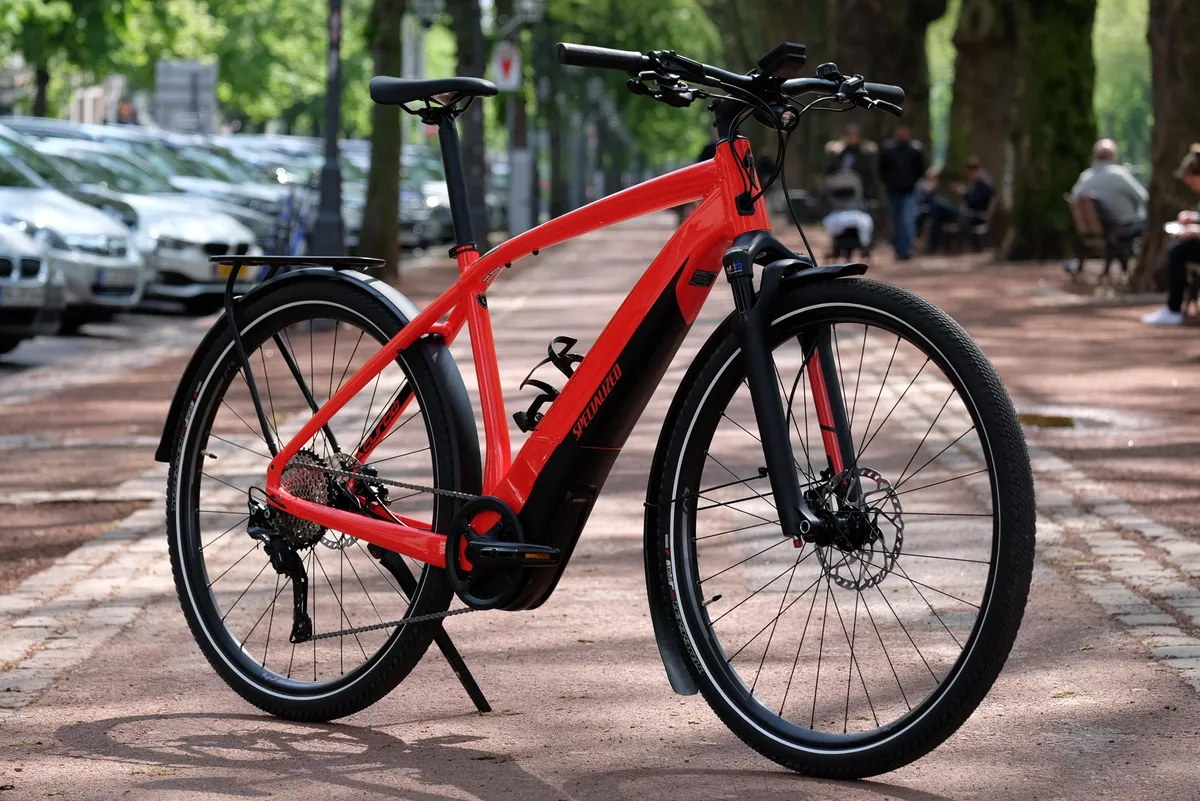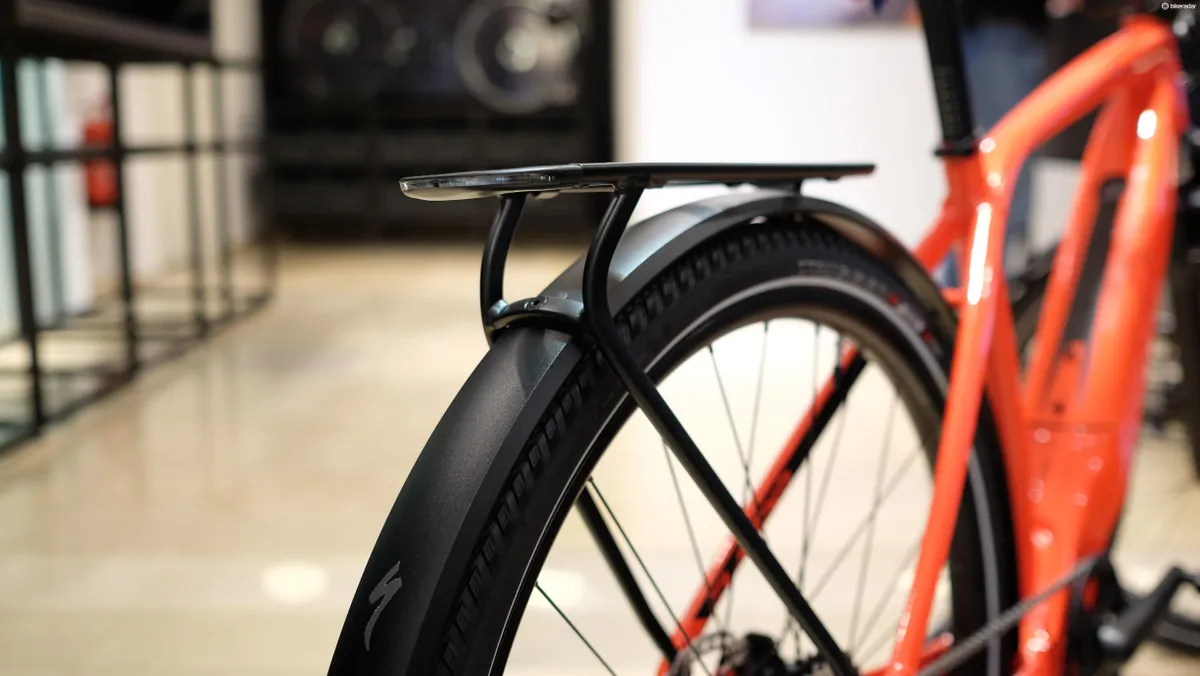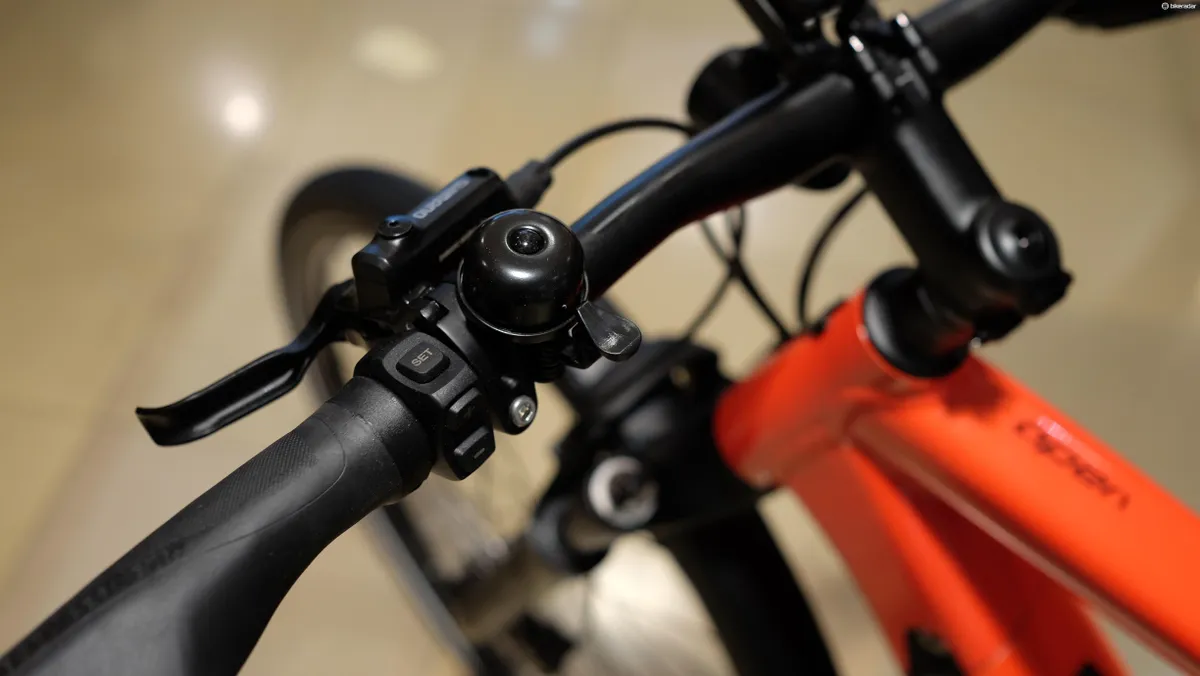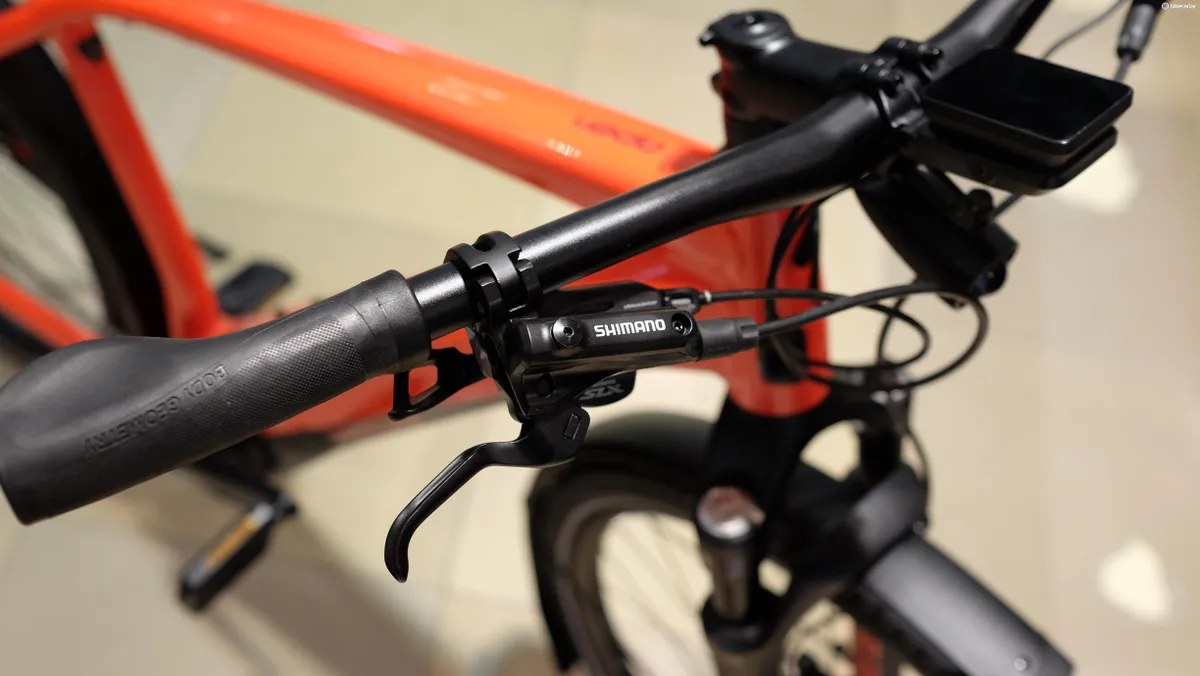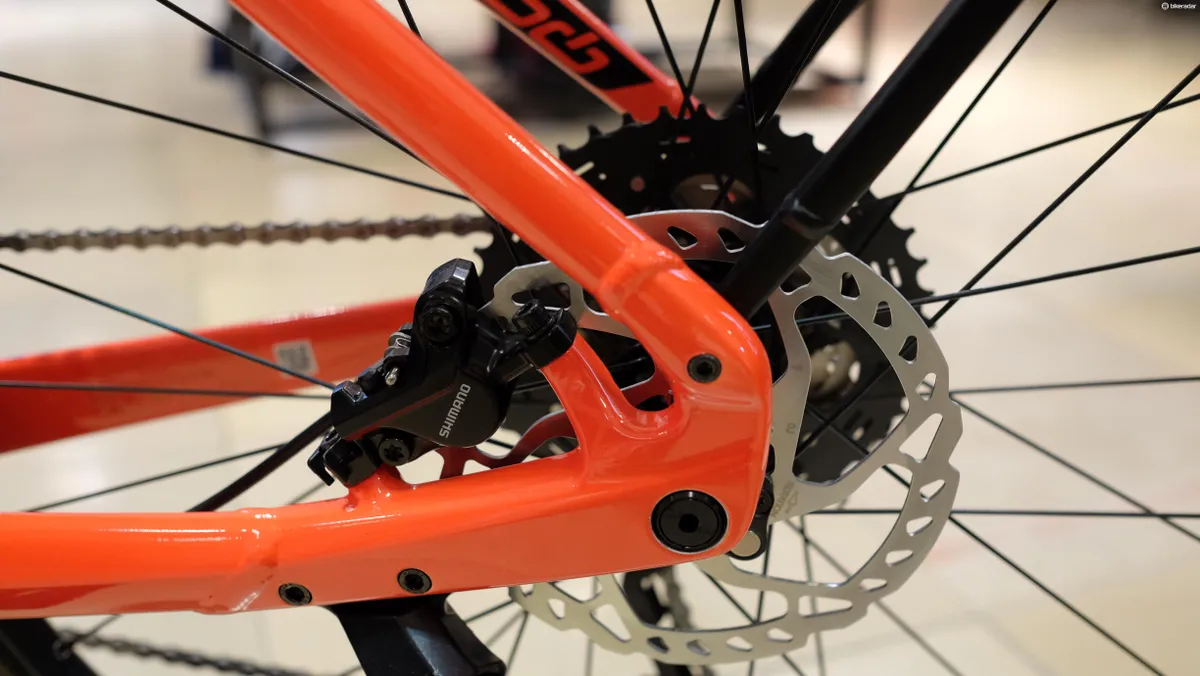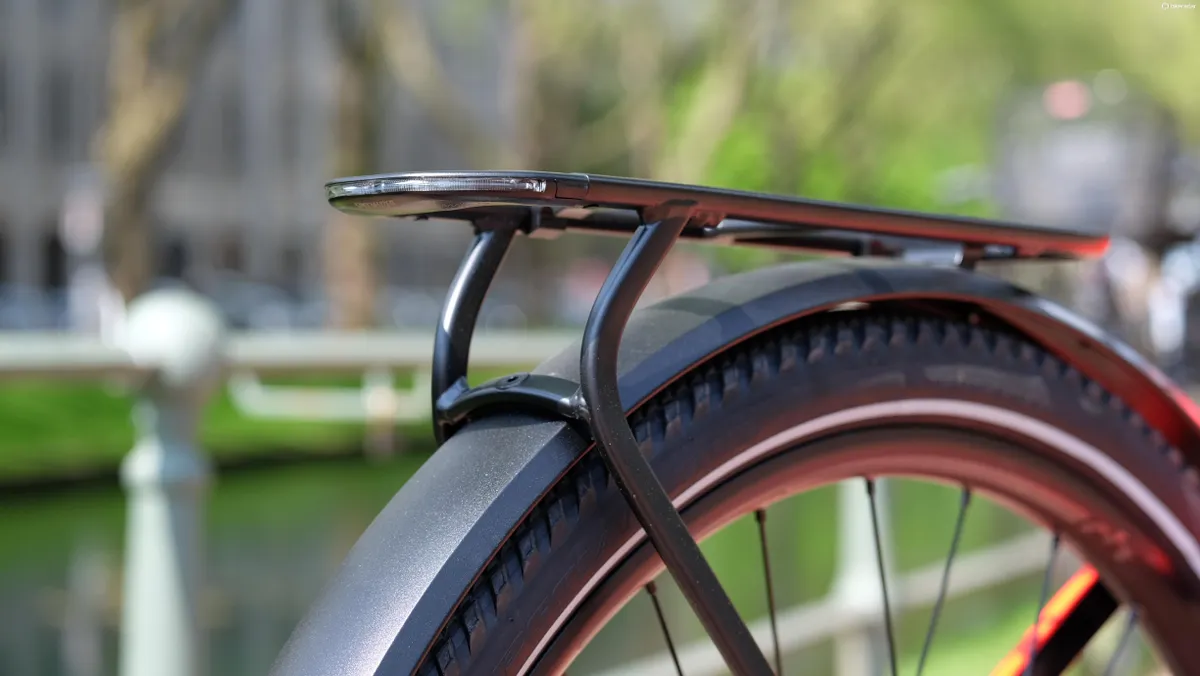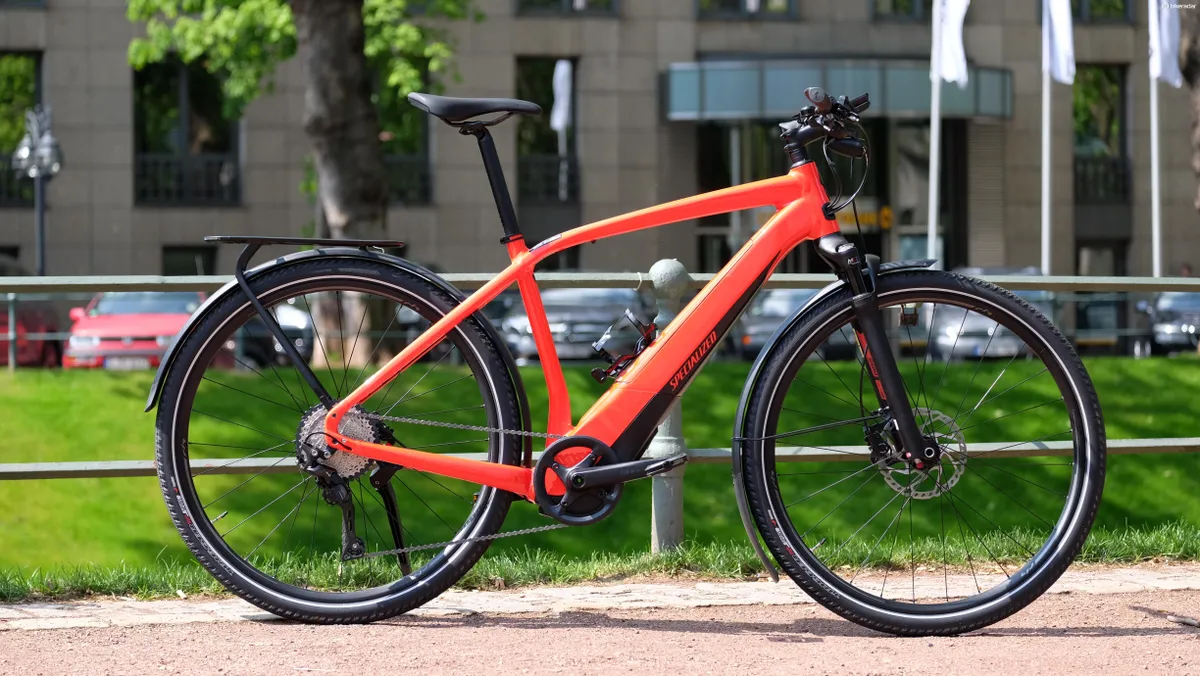Specialized recently launched an all-new line of electric bikes aimed at commuters and leisure cyclists. The Turbo Vado range builds on experience gained from previous and current Specialized e-bikes with a pedal-assist design that features all-new levels of integration and aims to take on the likes of Trek’s super commuter.
I was on hand for the bike’s launch in Dusseldorf, Germany, where I had a couple of days to put some leisurely assisted miles on its odometer.
Brave design decisions
When it came to the design of the Turbo Vado Specialized didn’t want to be restricted by the constraints that surround the bolt-on motor solutions used by most manufacturers. Instead, Specialized took the unusual step of developing its own e-bike battery and worked closely with motor manufacturer Brose to produce a custom motor. The result is a totally integrated frame, motor, and battery that you won’t be able to buy from anyone else.
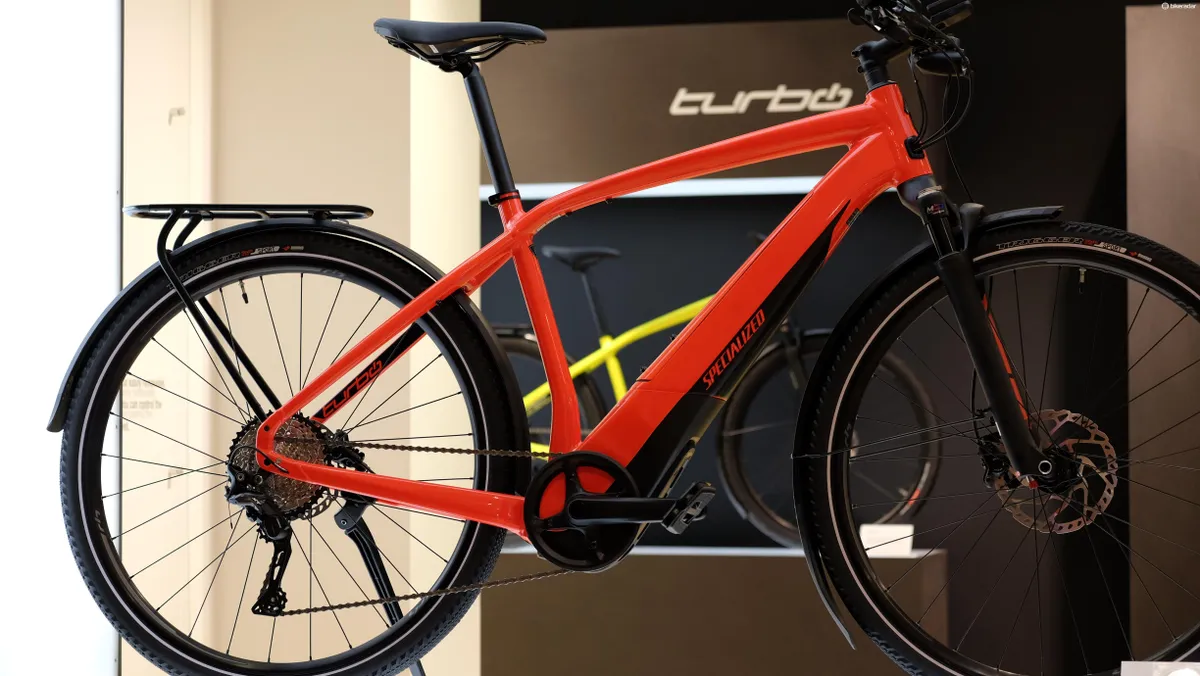
The Brose-derived 250w powerplant feeds from the bottom bracket area where it forms an integral part of the bike’s chassis. At 3.4kg it’s lighter and smaller than most motors on the market but inside is where it really counts, and this is where this motor does things a little differently. Beneath its vented casing there’s a drive belt that’s used to connect 3 stages of planetary gearing, and it's this belt which makes for such an unusually quiet and smooth power plant, say Specialized.
The frame itself is made from the company's E5 aluminium alloy and features a special cutout at its down tube, meaning that Specialized’s own newly devised battery cell slots seamlessly amongst the rest of the bike. The removable battery also releases at a 45-degree angle, meaning there’s plenty of room for a top tube, something that Specialized says is absolutely necessary to achieve the right levels of stiffness with an e-bike frame. Each Turbo Vado model is also available in a women’s version with its own step-thru frame design.
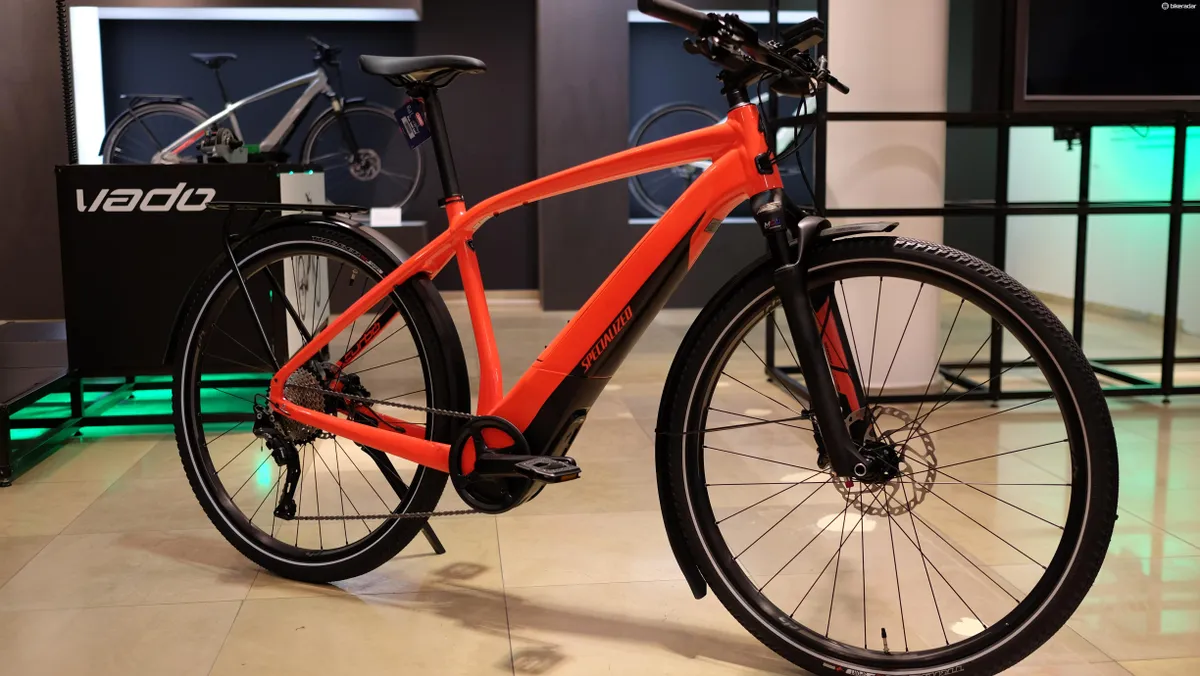
Three different battery options will be on offer, with Specialized displaying the maximum one offering a range of 75km (47 miles), though this estimate is based upon a rider using the medium assist or Sport setting. There’s another good reason why this isn’t necessarily an accurate figure too, and that’s thanks to clever customisation that Specialized is soon to unlock thanks to its forthcoming Mission Control app.
Accessed through an Android or Apple phone, the Specialized Mission Control app is able to customise the level of assistance offered for all three of the bike’s assistance settings, those being: Eco, Sport and Turbo. This means a rider could drop the level of assistance considerably, extending the battery life in the process. Informal discussions with engineers led us to believe that a kilometre range comfortably into three figures should be easily achievable.
Another clever feature accessible only through the app will allow riders to predetermine a journey range. The bike will then dish out its power accordingly, making sure it’ll always reach the destination without running empty. It’s a clever step that should address the range anxiety commonly associated with e-bikes. The app can also be used to diagnose any faults that may occur within the motor or battery and could have multiple further features that could be unlocked with future firmware updates..
Initial ride impressions
The Turbo Vado is on the more aggressive side of bikes of this kind, and is something that I noticed right away when I hopped on the bike. The relatively low front end, short stem and wide-ish riser bar put me into a comfortable but efficient shape right away. It was a position that immediately reminded me of a bike I tested not so long ago, the excellent Genesis Skyline 30. The Turbo Vado is also extremely stable – no hander at low speed sort of stable – thanks no doubt to well-chosen geometry, but credit must also go to the design team’s efforts to keep the heft of this machine as low as possible.
Despite this stability, the steering remains quick, and the whole bike generally feels as if it defies its 21kg/46.29lb claimed weight.

The motor is also very impressive, delivering smooth and near silent assistance on demand. It’s quick witted, with almost no lag coming off and on the power. A switch at the left hand side of the handlebar lets you cycle through the available assistance levels, the first of which is Eco mode, and for me it was the pick of the bunch. I’d describe it as being like myself, but on a really good day! Oh, and if needs be the Turbo Vado can also be ridden with no assistance.
Spin the cranks backwards and the drivetrain feels entirely friction free, almost as if no chain is connected at all, yet push the pedals forwards and the drive bites rapidly.
Suddenly the Turbo becomes naturally aspirated and you’ll quite quickly learn that getting above 40 km/h on flats is a real workout
Even in this more gentle mode, it's easy to reach the bike’s 25km/h assistance limit relatively quickly, with the motor only really participating where I wanted it to. When it did, a smooth sweeping sensation could be felt through the cranks.
Seated acceleration can still be likened to an out of the saddle effort with a regular bike, particularly in lower gears, but try to push past the 25 km/h mark and you’ll feel the power drop away. Suddenly the Turbo becomes naturally aspirated and you’ll quite quickly learn that getting above 40 km/h on flats is a real workout. – whoever said these weren’t a good training tool?
On the whole I thought the bike made an excellent judgement when it came to how much of my effort it called for, something that’s critical for a pedal-assist system.
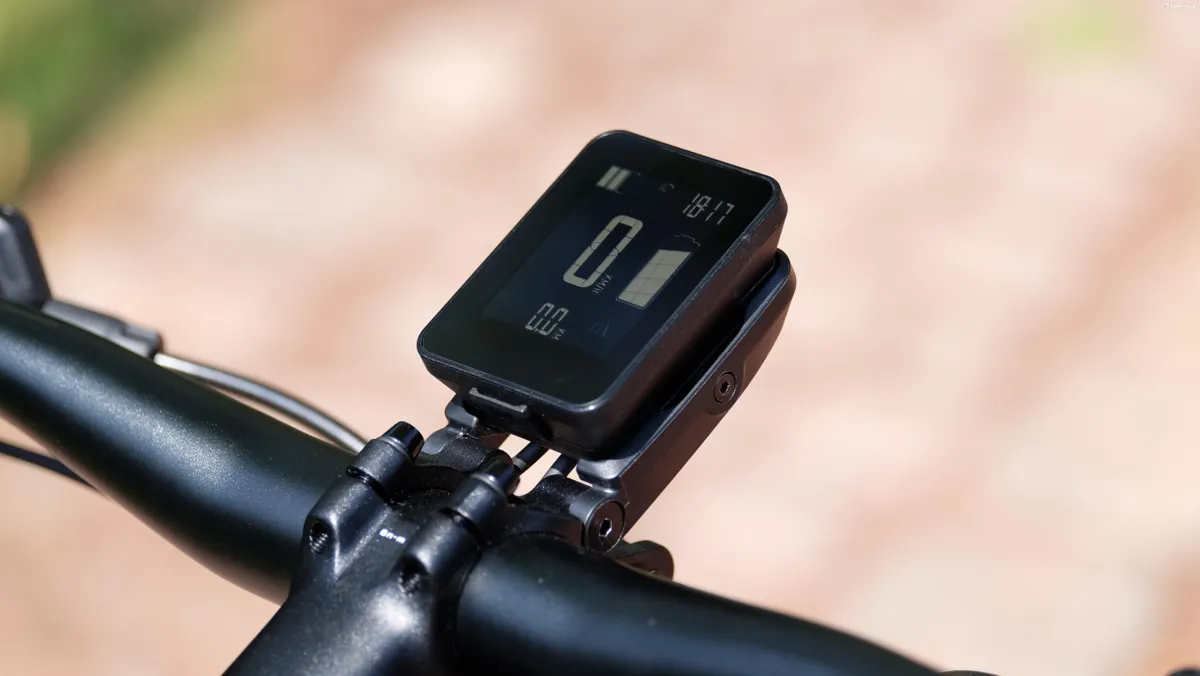
Switching to the Sport level gives you more of the same experience. On the open road the acceleration can feel deceptively slow but enter a narrow gravel path, for example, and you’ll quite quickly realise that you’re likely to be travelling at a speed you wouldn’t maintain with your legs alone.
Turbo is the third and most assisted way to travel, and in this setting the bike is able to deliver more than three times the input that it receives. At this level gear choice seems somewhat trivial as I’m fairly confident that the bike holds the torque to pull away in the final 11t sprocket of the Shimano XT cassette. Of course, it doesn’t feel good to pull away in taller gears, and those with mechanical sympathy will wince at the sounds the freehub body and cassette make as the motor gives its all.
The same can be said for gear changes, which often occur when the motor is pushing hard. Sometimes it really slams into and out of gears, in a way that goes against anything I have ever learned to do on a bike with derailleur gears.

The linear, torquey feel of the motor seems to be at odds with the close-ratio wide range cassette. I can’t help but feel like a hub gear of some variety would suit it better. For me, it’s probably the only part of the bike that really doesn’t feel right.
Regardless of that, it sure is fun to get to the 25km/h(15.5mph) limit so quickly but I’d liken it to being in a fast car that’s stuck in first gear. Of course, a quicker 45km/h (28mph) version is also available but for most territories this will require tax, registration and mandatory helmet use.
The 2in (51mm) tyres offered plenty of grip on dry and wet tarmac and I heard of just one puncture from a fleet of something like 20 bikes. Also worthy of talking about are the mudguards, which wrap far further around the front wheel than most designs and feature a special lip to prevent water that is fired out of the front wheel from splashing the rider. We found them to be particularly effective against Dusseldorf’s many puddles.

Stiffness is also in abundance thanks to vast alloy tubes and Boost spaced thru-axles front and rear. Specialized worked closely with suspension firm Suntour to produce a fork for this model though a version with a rigid fork is also sold. It’s a great little performer with custom coil sprung internals, an alloy steerer and a lockout function along with external rebound and preload adjustments. It wasn’t a surprise to find that this bike’s Shimano brakes were also excellent.
The Turbo Vado’s integrated lights are another real highlight. The front unit uses a special aspherical lens which not only looks good but is said to improve the light’s pattern considerably. Our daytime rides didn’t put these properly to the test but their impressive output was obvious even with the sun above us. Illuminating the rear is a clever rear light unit that’s integrated into the rear of the bike’s rack. Using just one LED but clever optics, it’s impressively bright and – like the front unit – can easily be seen in daylight hours.
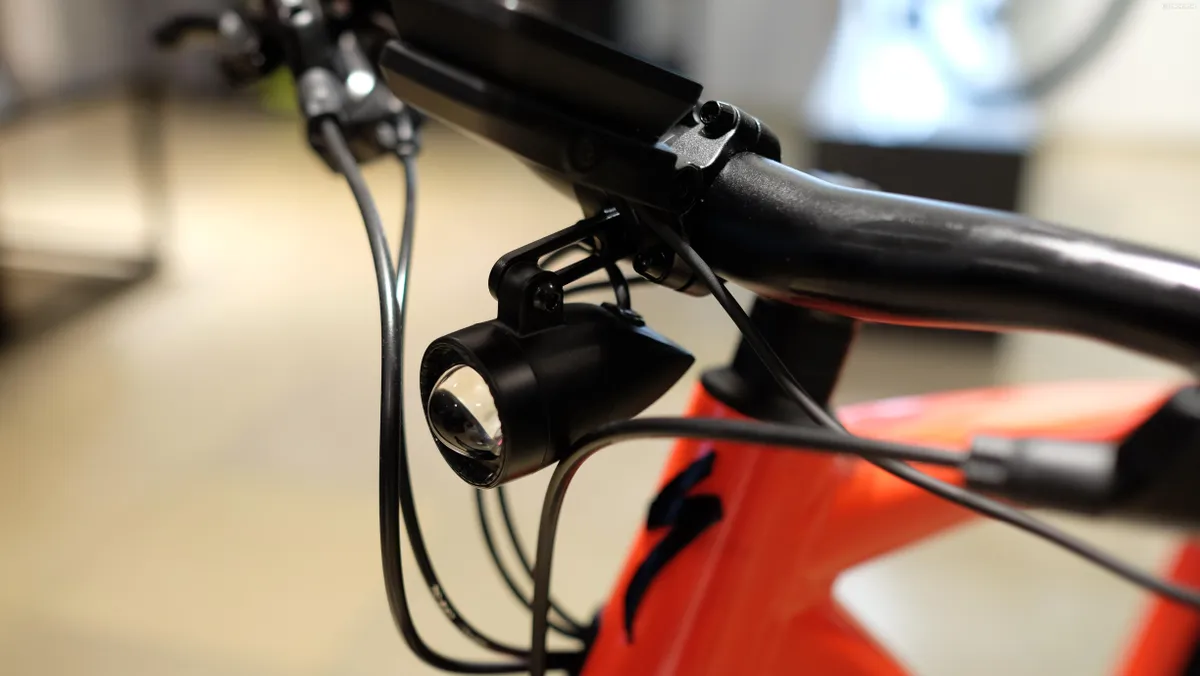
The rack itself is a quality part from Racktime and was chosen due to the impressive list of click-on accessories the manufacturer already produces.
Its clever smartphone integration means that this bike should never start a journey it’s not capable of finishing with its own power, and that’s just the sort of dependability that I think some potential buyers would be looking for. Above all else though, it’s extremely well executed with well chosen parts and handling that won't intimidate a newcomer or disappoint an experienced rider.
The Turbo Vado has opened my eyes to the true potential of e-bikes, call it an e-piphany. Here we have a vehicle that could genuinely get people out of cars for a commute that’s as much of a workout as they want it to be, and can even deliver fun in the process.
If one bike has the potential to transform urban mobility for the better then I think this it it. Four years of experience and development in this area combined with a few brave choices from Specialized has really paid off. We’re looking forward to trying one out for a little longer, and will follow up with a full review.
The Turbo Vado range
The Turbo Vado range includes five models ranging from the €2,799/$2,700 Vado 2.0 right through to the €4,399/$4,800 Vado 6.0. The Vado 5 and 6 both offer assistance at up to 45 km/h and conform to the recent l1e regulations for within Europe while the remaining models limit assistance at 25 km/h (with the exception of the Vado 3.0 which can legally assist to 28mph in the US market). Head on over to the Specialized website for further info.
